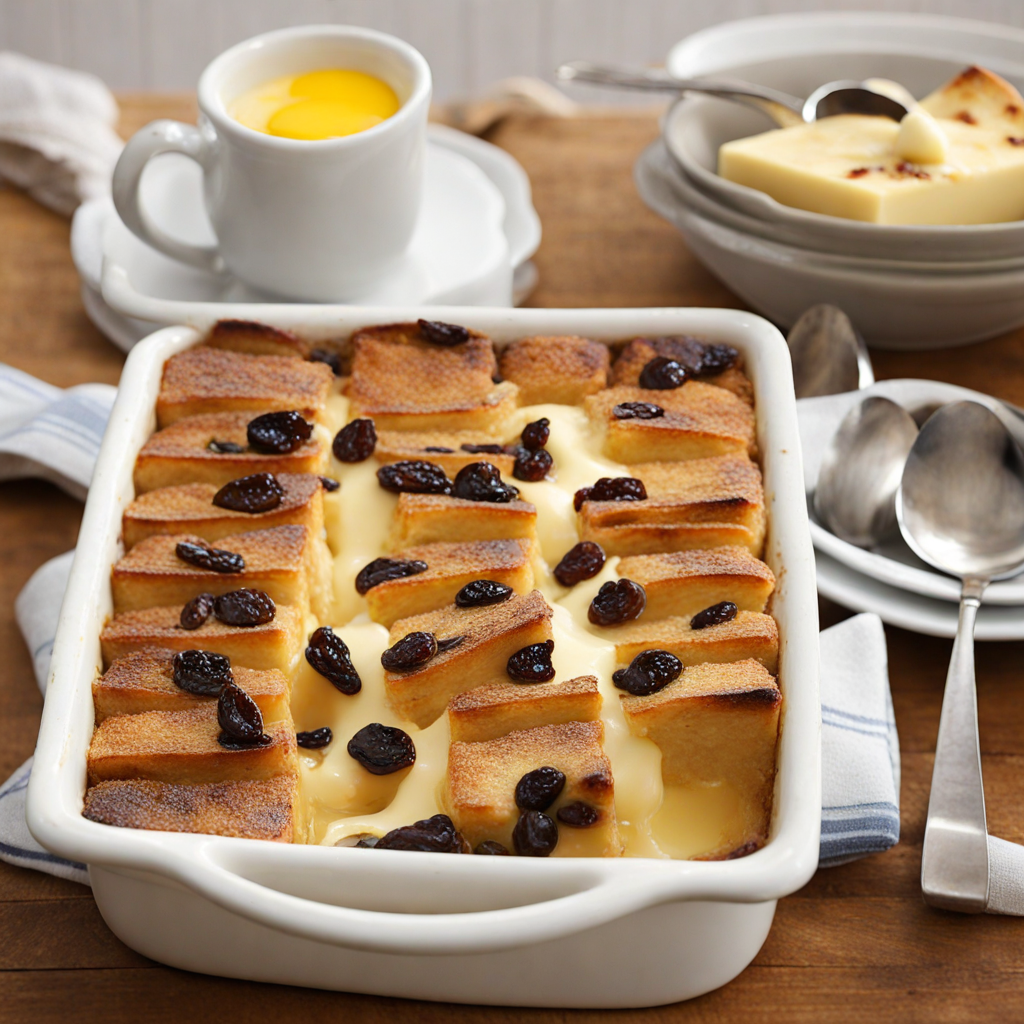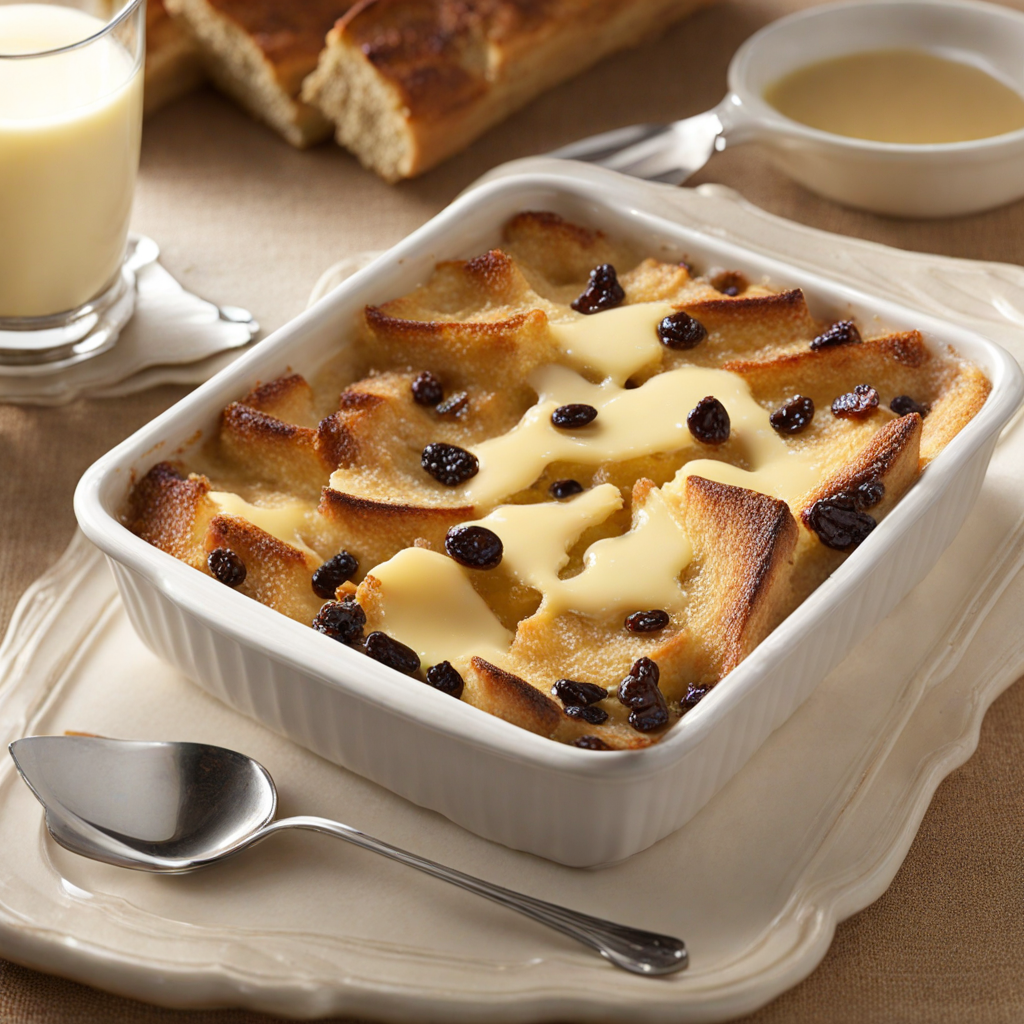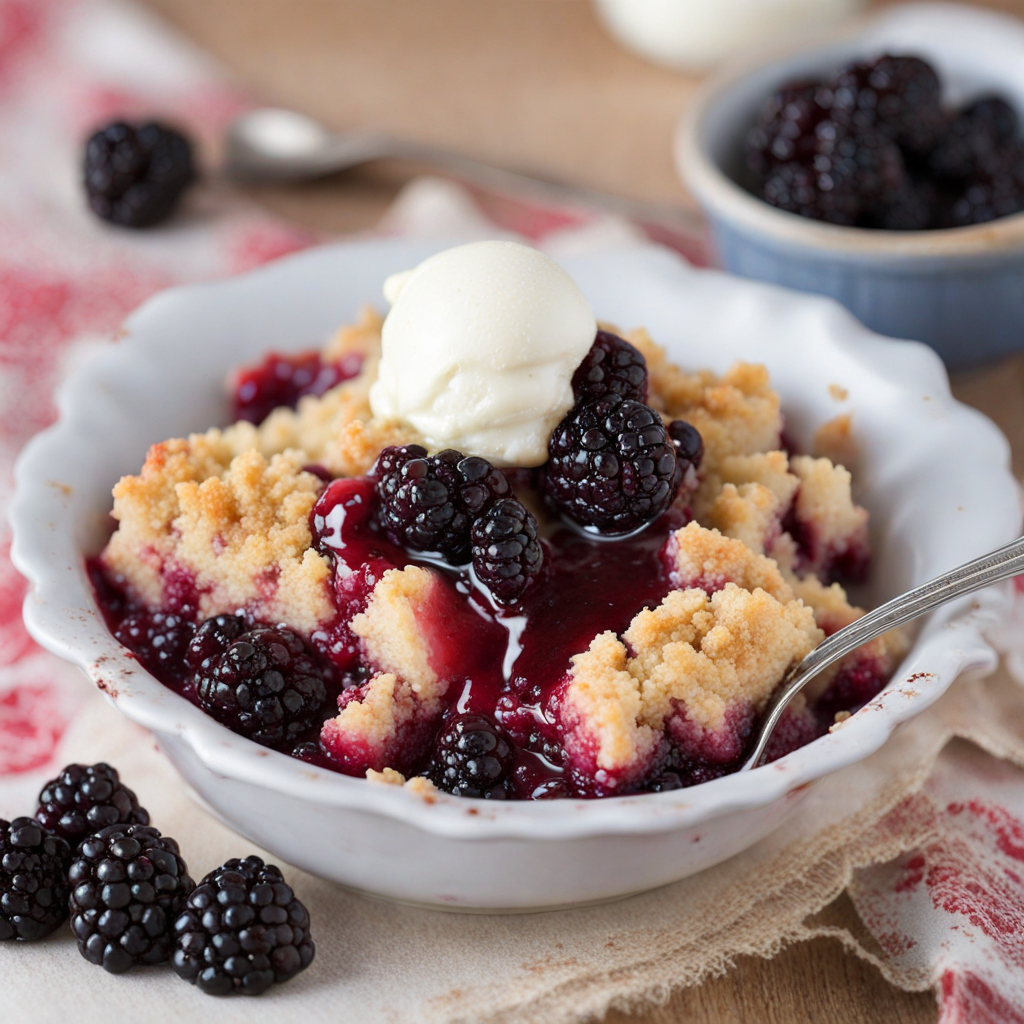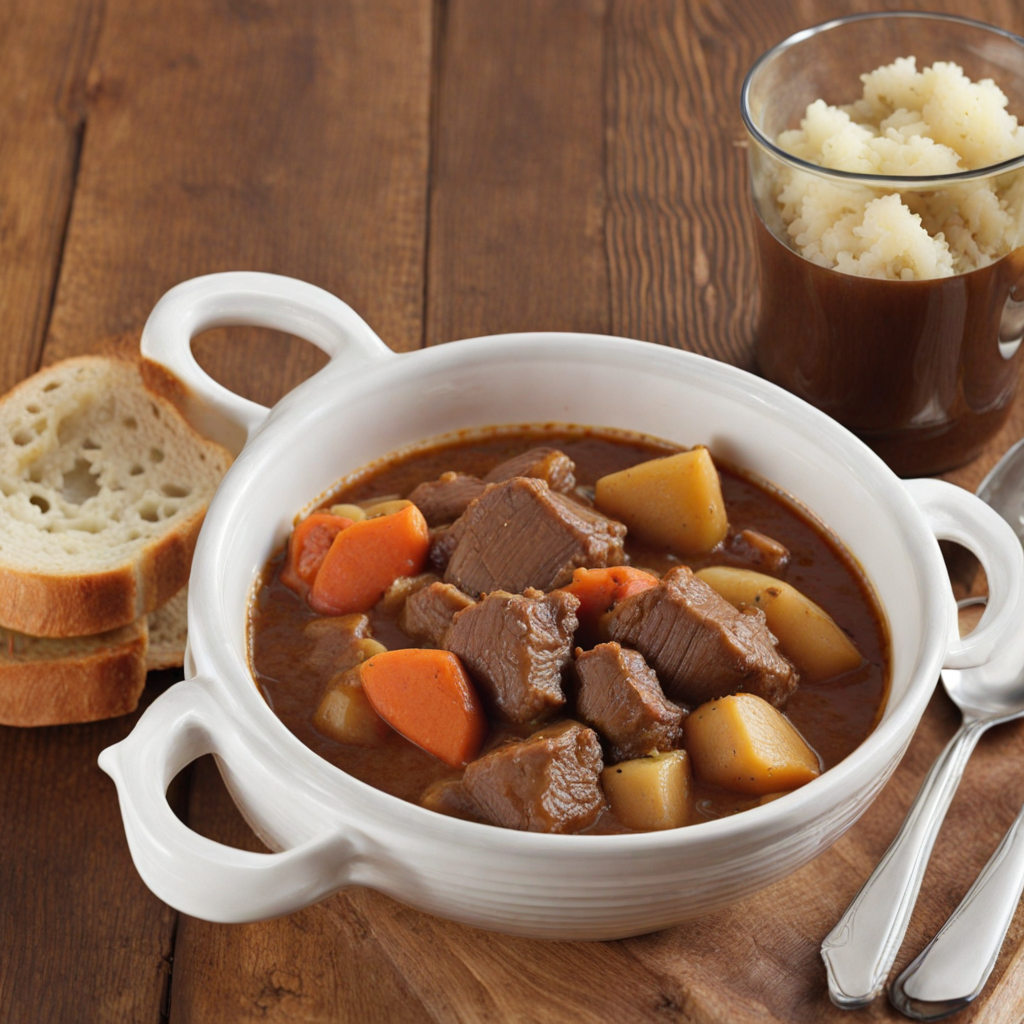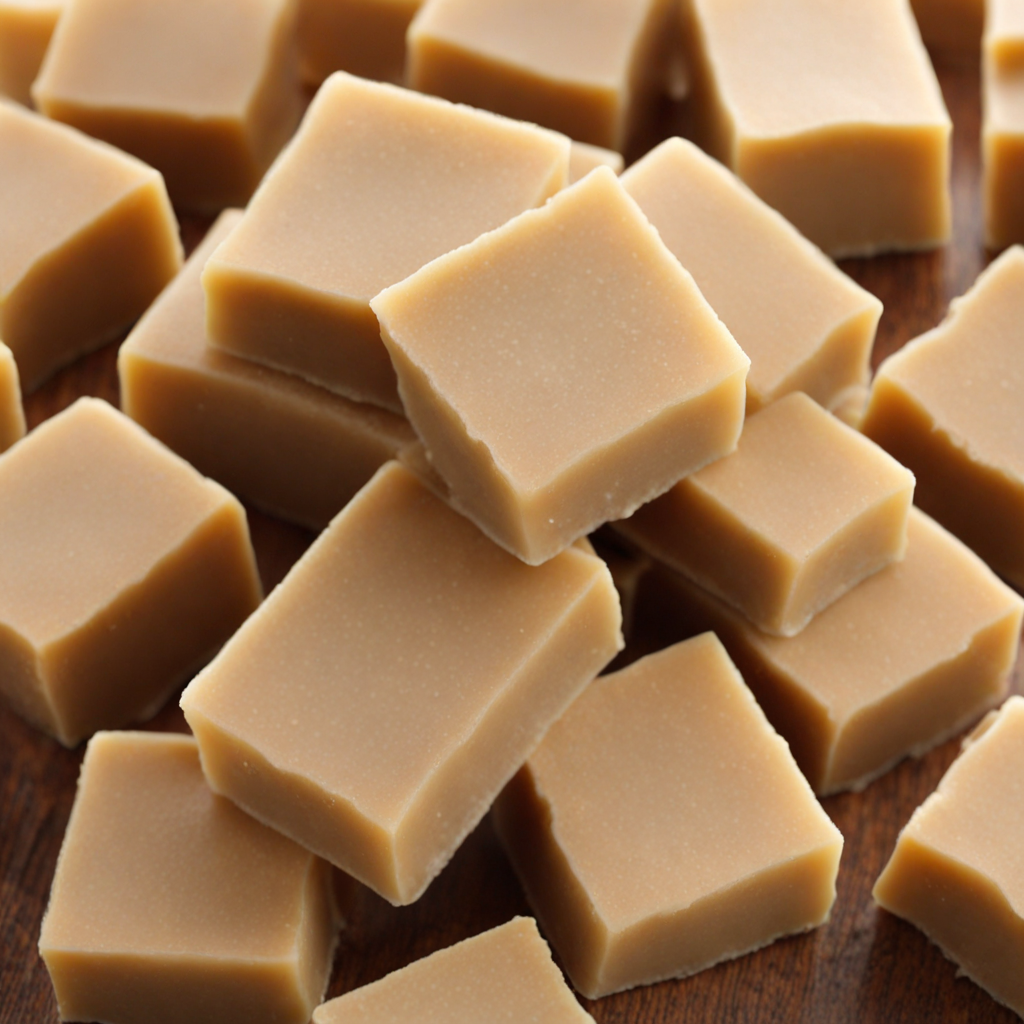Bread and Butter Pudding
Bread and Butter Pudding is a delightful dessert that hails from the United Kingdom, known for its comforting and nostalgic qualities. This dish typically utilizes stale bread, often sliced and buttered, layered with raisins or currants. The use of day-old bread not only reduces waste but also enhances the pudding's texture, allowing it to soak up the rich custard that binds the ingredients together. The combination of the soft, buttery bread and the chewy dried fruit creates a satisfying contrast that is both indulgent and heartwarming. The custard for the pudding is a luscious blend of eggs, milk, cream, and sugar, often infused with vanilla or nutmeg for added depth of flavor. Once poured over the layered bread and fruit, the mixture is baked until the top turns golden brown and slightly crispy, while the inside remains moist and creamy. This duality of textures is a hallmark of Bread and Butter Pudding, making each bite a delightful experience. It's often served warm, sometimes accompanied by a drizzle of cream or a scoop of vanilla ice cream, which adds an extra layer of decadence. This classic British dessert is not only a testament to frugality but also showcases the ability to transform simple ingredients into something truly special. It evokes a sense of home and tradition, often reminiscent of family gatherings and cozy evenings. With its warm, sweet aroma wafting from the oven, Bread and Butter Pudding is a dish that invites you to indulge in a slice of British culinary history, making it a must-try for anyone eager to explore new and comforting flavors.
How It Became This Dish
The History of Bread and Butter Pudding: A Culinary Legacy from the United Kingdom Origins: A Humble Beginnings Bread and Butter Pudding, a quintessential British dessert, embodies the spirit of frugality and resourcefulness that has characterized British cuisine for centuries. Its origins can be traced back to the late 18th century, though the precise date remains elusive. The dish emerged during a time when bread was a dietary staple, and waste was frowned upon—particularly during periods of economic hardship and food scarcity. The earliest recorded recipes for bread and butter pudding appeared in cookbooks such as "The Art of Cookery Made Plain and Easy" by Hannah Glasse, first published in 1747. Glasse's work reflects the ethos of the Georgian era, showcasing a transition from a diet reliant on rustic, peasant foods to more refined culinary practices. However, the pudding itself was an adaptation of older, simpler dishes that utilized stale bread, a common occurrence in households of the time. The practice of repurposing leftover bread into a sweet, comforting dish was a testament to the creativity and ingenuity of cooks navigating an uncertain economic landscape. Cultural Significance: A Comfort Food As bread and butter pudding gained traction, it became emblematic of British comfort food—nourishing, straightforward, and satisfying. Its cultural significance deepened during the Victorian era, a time marked by industrialization and urbanization. As people flocked to cities for work, traditional culinary practices began to change, with many families relying on quick and affordable meals. Bread and butter pudding fit seamlessly into this new lifestyle, providing a means to utilize stale bread and transform it into a delicious dessert. The dish also reflected broader societal changes, including the rise of the middle class and the importance of home cooking. It became a staple in working-class households, celebrated for its ease of preparation and modest ingredient list. Typically made with buttered slices of bread layered with raisins or currants and soaked in a mixture of eggs, milk, sugar, and nutmeg, bread and butter pudding was a versatile canvas for culinary creativity. Variations emerged, incorporating additional ingredients like spices, citrus zest, or even chocolate, allowing home cooks to personalize this simple dish. Development Over Time: From Household Staple to Gourmet Delight Throughout the 20th century, bread and butter pudding underwent a transformation from a humble household staple into a dish celebrated in restaurants and culinary establishments. As the British food landscape evolved, so too did the pudding, reflecting changing tastes and culinary trends. Post-World War II Britain saw a resurgence of interest in traditional dishes as people longed for nostalgia and comfort amidst the rapid modernization of society. The 1970s and 1980s marked a significant turning point for British cuisine, with chefs like Delia Smith and the emergence of television cooking shows bringing attention back to classic recipes. Bread and butter pudding featured prominently in their programming, celebrated not only for its simplicity but also for its evocative connection to childhood memories and family gatherings. This renewed focus on traditional foods helped cement bread and butter pudding as a beloved dish across generations. In recent decades, as the culinary scene has become increasingly globalized, bread and butter pudding has adapted to contemporary tastes. Chefs have experimented with diverse flavors and ingredients, incorporating elements from various cuisines. For instance, the classic recipe has been reimagined with brioche, croissant, or panettone, and infused with exotic spices or liqueurs. This evolution has kept the dish relevant and exciting, allowing it to transcend its humble beginnings while remaining deeply rooted in British culinary tradition. Modern Interpretations: A New Era of Bread and Butter Pudding Today, bread and butter pudding retains its status as a beloved dessert in both home kitchens and high-end restaurants. The dish speaks to the current culinary trend toward sustainability and minimizing food waste, as it encourages the use of leftover bread. Moreover, in an era where food trends often prioritize intricate plating and complex preparations, bread and butter pudding stands out for its comforting, homey appeal. Restaurants across the United Kingdom have embraced the pudding, often featuring creative variations on their menus. From gourmet renditions adorned with artisanal ingredients to modern takes using alternative milks for vegan options, the adaptability of bread and butter pudding is a testament to its enduring legacy. Moreover, the dish has found a place in popular culture, appearing in cookbooks, television shows, and even social media, where home cooks share their interpretations and nostalgic connections. Cultural Reflections: Bread and Butter Pudding in Contemporary Society The story of bread and butter pudding is not merely one of culinary evolution; it also reflects broader social and cultural dynamics in the United Kingdom. As food trends continue to shift toward sustainability and a return to traditional values, the pudding serves as a symbol of resilience and adaptability. It stands at the intersection of comfort and innovation, reminding us of the importance of honoring our culinary heritage while embracing new possibilities. In a world increasingly dominated by fast food and convenience cuisine, bread and butter pudding offers a counter-narrative—one that celebrates the art of slow cooking, the joy of sharing meals with loved ones, and the beauty of simplicity. Whether enjoyed at a cozy family gathering or in a bustling restaurant, this timeless dessert continues to evoke warmth and nostalgia, bridging generations and reminding us of the power of food to connect us to our past. Conclusion: A Timeless Classic In conclusion, bread and butter pudding is more than just a dessert; it is a cultural artifact that encapsulates the history and evolution of British cuisine. From its origins as a frugal dish designed to minimize waste to its status as a beloved classic, the pudding has weathered the storms of culinary change, remaining a cherished part of the British food landscape. Its adaptability and enduring legacy ensure that it will continue to be enjoyed for generations to come, a comforting reminder of home and tradition in an ever-changing world.
You may like
Discover local flavors from United Kingdom


